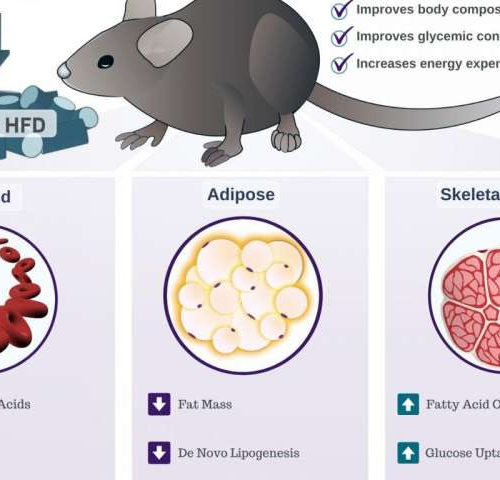by Pennington Biomedical Research Center A new study offers the first evidence that a protein named BAM15 acts as an energy uncoupler and could be an effective drug for treating obesity and related diseases. Obesity affects more than 650 million people worldwide and drives a number of dangerous health conditions, including type 2 diabetes, heart...
Tag: <span>Mitochondrial</span>
Vitamin B3 revitalizes energy metabolism in muscle disease
An international team of scientists, led by University of Helsinki reported that vitamin B3, niacin, has therapeutic effect in progressive muscle disease. Niacin delayed disease progression in patients with mitochondrial myopathy, a progressive disease with no previous curative treatments. Vitamin B3 forms have recently emerged as potent boosters of energy metabolism in rodents. These vitamins...
Temple finds link between blood vessel inflammation, malfunctioning cellular powerhouses
CREDIT: TEMPLE UNIVERSITY HEALTH SYSTEM (Philadelphia, PA) – The vast majority of cells in the human body contain tiny power plants known as mitochondria that generate much of the energy cells use for day-to-day activities. Like a dynamic renewable resource, these little power plants are constantly dividing and uniting in processes called fission and fusion....
The brain’s powerhouses are damaged in Creutzfeldt-Jacob disease
Charlampos “Haris” Tzoulis with groundbreaking research on Creutzfeldt-Jacob disease. Credit: Ingvild Festervoll Melien A study performed by researchers from the University of Bergen, Norway, and the University of Vienna, Austria, shows damage of the mitochondria—the cell’s microscopic powerhouses—in the brains of people with Creutzfeldt-Jacob disease. The researchers found that the mitochondrial power generator (known as...
New molecular auto-control system to avoid an excessive brown adipose tissue activity
Scientific team found a new metabolism regulation system for the brown adipose tissue using the kallikrein-kinin hormonal system, so far related to the physiology of the renal and cardiovascular system and inflammation and pain processes. This molecular auto-control system of lipidic metabolism, so far unknown, could help prevent the damaging effects derived from an excessive...
Gene behind long-recognized mitochondrial disease has highly varied effects
CHOP researchers find more than 30 variations in the MT-ATP6 gene with broadly variable clinical symptoms and biochemical features CHILDREN’S HOSPITAL OF PHILADELPHIA Philadelphia, March 12, 2019–For more than two decades, mutations in a gene located in the DNA of mitochondria have been classified as a mitochondrial disease and linked to a particular set of symptoms. However,...
Opinion: The Central Dogma of Mitochondrial Genetics Needs Rewriting
The recent discovery of 17 people who have inherited maternal and paternal lines of mitochondrial DNA has major ramifications for medical and ancestry research. Until last month, it was generally believed that mitochondria and their DNA are exclusively maternally inherited in humans. In a provocative report in PNAS, scientists identified 17 people from three unrelated...
Sequence and organization of the human mitochondrial genome
Mitochondria can use fatty acids or carbohydrates to create the ATP our cells need for energy. However the ATP creation process from fat is more efficient and creates less free radicals as a by product. … Formitochondrial health, the answer appears to become fat-adapted and minimize our sugar intake. Mitochondria perform diverse yet interconnected functions, producing...
Mitochondrial DNA in exosomes is the alarm that initiates the antiviral response
July 10, 2018, Centro Nacional de Investigaciones Cardiovasculares Researchers at the Centro Nacional de Investigaciones Cardiovasculares Carlos III (CNIC) have provided valuable information about the defense mechanisms of the immune system during the early stages of the response to pathogens such as viruses and bacteria. The research findings, published today in Nature Communications, contribute to the understanding of the...
Mutation links bipolar disorder to mitochondrial disease
Mutations in the gene ANT1 may confer a risk for bipolar disorder through a complex interplay between serotonin and mitochondrial signaling in the brain. These two pathways have been separately implicated in bipolar disorder, but the link between levels of the neurotransmitter serotonin and mitochondrial dysfunction had not been established. Researchers at the RIKEN Center for Brain...




